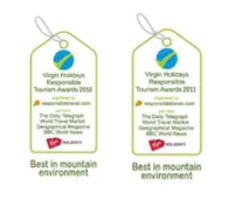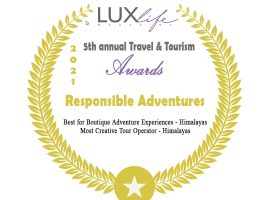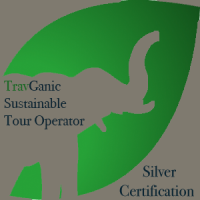7 Challenging Trekking Trails in Nepal
7 Challenging Trekking Trails in Nepal There is something quite intriguing about exploring the unknown. Traversing rugged terrain is very popular, and some of the most challenging environments are found in proximity to mountainous regions. Nepal, the Himalayan nation, has always been a popular destination for trekkers – amateurs and pros alike. While most people may equate Nepal with the expedition to conquer Mount Everest (as seen in the 2006 documentary Everest: Beyond the Limit on Prime Video), the country offers a great variety of treks to other not-so-intimidating-yet-challenging areas. If you’re all prepared to take the next step, then the information below can guide you to some of the best Nepal trekking regions. Due to the difficult terrain, some of these routes are recommended only for experienced trekkers. 1. Manaslu Circuit Trekking (Image: “ManasluCircuit4.jpg” by Spencer Weart licensed under CC BY-SA 3.0.) The Manaslu region is located in west-central Nepal and is one of the less-visited regions of the Himalayas. Basic infrastructure is minimal as you go around Mt. Manaslu, the eighth-highest mountain on earth. Manaslu circuit trekking is possible even though many parts of the area have yet to be explored. Individuals have come here since the early 1990s, thanks to the pristine wilderness. The mountain’s peak crests at 8,156 meters. The trail goes around the Manaslu Conservation Area, which is home to rare animals and birds.
Nar Phu trek during the spring season
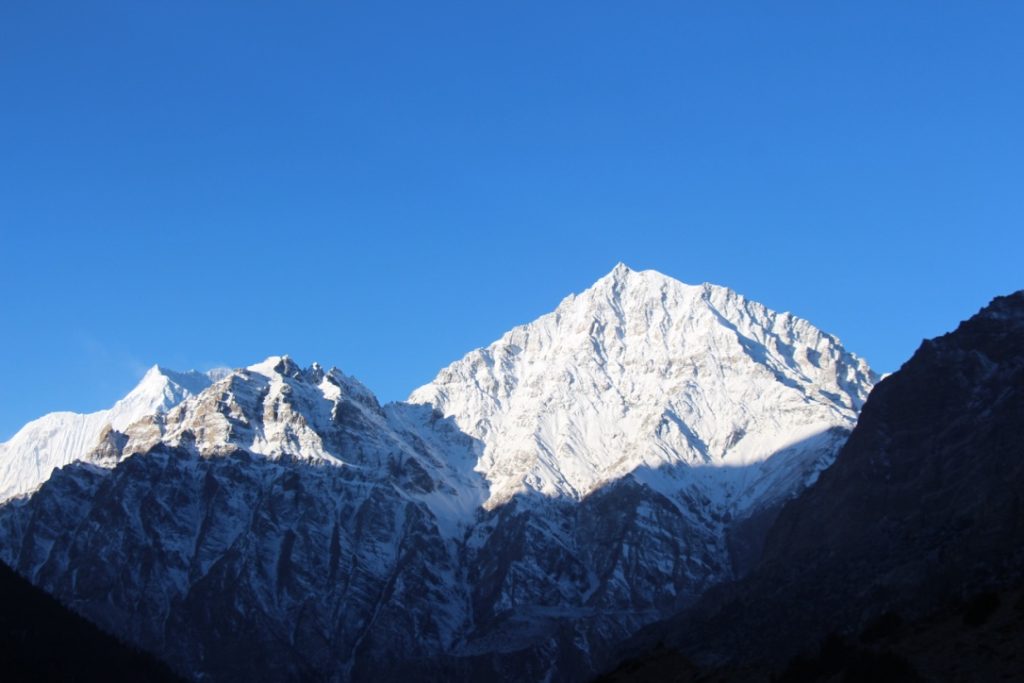
Nar Phu Trek during March/spring season Nar and Phu Valleys are located in a remote part of the Manang district on the Annapurna Range’s Northside. It is in what the Nepalese government calls the “Restricted Area,” where special permits are required and obtained by bonafide Trekking agencies of Nepal. This area was opened to foreigners in 2003. The trek’s duration depends on the trekking group’s time and fitness level, opening up a few options. It’s time for the actual trekking part. If you have plenty of time between 3-4 weeks, you can choose to drive to Besisahar and start your trek to Koto on the main Annapurna Circuit trail. The hike takes four days to get to Koto. Then, you branch north to the restricted area of Nar and Phu from Koto. You can come out of the “restricted area” via the more challenging and higher way via Kang La pass 5360m to Ngawal on the Annapurna Circuit trail or retrace your steps back to Koto. If time is not a problem, you can continue towards Tilicho Lake and go over the Thorung La pass to Pokhara. Otherwise, you can take a jeep from either Ngawal or Koto (depending on your itinerary’s choice) back to Besisahar and return to Kathmandu. Our group from Singapore had a short time to do this trek, so we did the quickest and safest possible itinerary for them. Here is an article about the Nar Phu trek we conducted for our Singaporean Group. Style of Trekking – Camping. Our trek to Nar Phu valley was going to be an entirely supported expedition-style camping trek. A camping trek requires many logistics as all camping equipment, food, and provisions must be reorganized and carried throughout the trekking trip. Why do a camping trekking tour The Nar Phu valley trekking area is newly opened and isn’t as developed with lodges/teahouses as the Annapurna, Langtang, and Everest regions. One has to be very fit to do a lodge trek in this area as the distances between villages are far, especially during the early spring. Most villagers wouldn’t have returned from the warmer lowlands to avoid the harsh winter. Camping trek is a better option if you part of a larger group – 4 or more persons as some village lodges have only two rooms for trekkers. In addition, a camping trek gives your group flexibility, e.g., if some people in your group are not as fit or not well, your team can set up camp before the predestined location provided they find a suitable campsite. The support team. We had a team of a Trek leader (yours truly), three assistants’ guides, a trekking chef, three kitchen assistants for the chef, 12 mules, and a mule driver for a group of 9 trekkers for a 10-day trip. Day 1) Our group from Singapore arrived in the afternoon. There were met at the airport and brought to their hotel for the pre-trek briefing. We met at the hotel lobby at an agreed time to go for dinner. We finished our meal and parted ways to rest due to their very early start to the day. Day 2) Despite being on a tight schedule, we had to keep this extra day in Kathmandu as the Department of Immigration requires the original passports for the restricted area permit. While the trekking permit was being organized, the group went on a walking tour of Swayambhunath Stupa and walked through the back streets of Kathmandu into Basantapur Durbar Square – a World Heritage site before heading back to Thamel, the tourist district, for lunch. Once we ordered our lunch, the group was briefed on the journey’s timing the next day, what to expect on the trek, how our team delivered our service, etc. The trip briefing is done to save time while waiting for the meal to arrive. Our permits were issued by the end of our lunch. After that, we parted ways so everyone could return to final repacking for the trek as we had a very early departure. Day 3) We had requested an early buffet breakfast at the hotel as we had two sections of driving for the day, which could take anywhere between 12-14 hours. While the group had breakfast, our staff loaded their trekking kitbags onto the van doing the journey’s first leg. The first part of the trip was to Besisahar – a mere 145km drive, but the winding road took 5 hours to reach. After that, we were to change vehicles and get into three jeeps for the rough track to Koto. The automobiles got loaded up while the group had lunch at Besisahar. It was a very tight squeeze with our nine trekkers, nine support crew, our camping gear, and food. Our team had left for Besisahar the previous day as they had to shop for fresh fruits and vegetables and organize the packing. We arrived at Koto after dark at 7.30 p.m. The drive is very scenic, but the rough road is bone-jarring. However, the local drivers say the more load the jeeps have, the less bumpy the ride is due to the weight. We had another early night after dinner at the lodge. The Nar Phu Trekking begins. Day 4) We had ordered our breakfast the previous night to save time the following morning. We woke up to beautiful views of Annapurna II and Lamjung Himal. We had to check in with the police post with our special permits before entering the Nar Phu Valley. We left the Marshyangdi Valley a short hike later and joined the Nar River Valley. The walk is along a wooded area with a combination of an undulating trail but gently gaining altitude. We had started at 2600 meters, and our camp was going to be at 3200 meters. Most people head for the village of Meta at 3560 m, but we had planned to end our day two hours before that at Dharmashala (a resting place for travellers).
Annapurna Poonhill Trek during the spring season
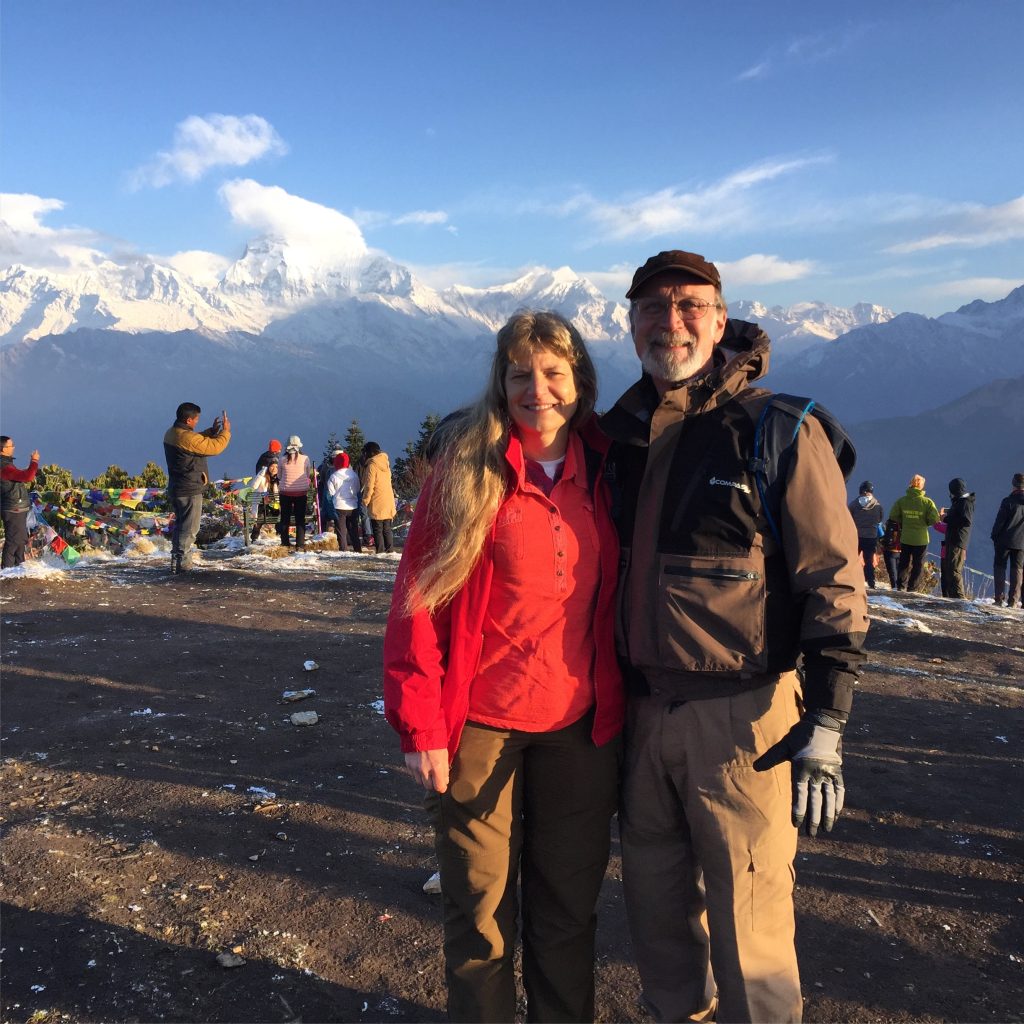
Annapurna Poonhill Trek during the spring season Ghorepani Poonhill Trek during the spring season. Kay and Paul started corresponding with us with their requests to visit museums and architectural monuments of Kathmandu, which they are very passionate about, before heading out on their tailor-made trek during their nine-day visit to Nepal. They had a hectic start to their first couple of days of the trip as we had to squeeze in as many World Heritage sites as possible on the afternoon they arrived and the following day before flying off to Pokhara in west Nepal; then driving to the starting point of the trek and hiking for an hour on day two. Day One, Kathmandu arrival and sightseeing. Their flight landed with a slight delay as it has become a norm at Tribhuvan international airport in Kathmandu due to the weather and air traffic. I met them, brought them to the hotel to check in, have a quick bite, and go sightseeing in the afternoon after withdrawing money from an ATM. Day two: Morning tour and onward to Pokhara. They went on the sightseeing tour the following day as planned, and they had an early lunch before there were dropped off at the domestic airport, where I met them and checked into the domestic terminal. We found out the flight had been delayed by two hours due to the morning foggy weather and air traffic upon asking the airline’s desk. We went through the usual security procedures, went to the departure lounge, and waited for our flight to be announced. We went to the bus, which drove us to the aircraft and waited to take off when the pilots were informed of heavy rain in Pokhara. We were told the flight was cancelled as it was getting late in the afternoon, and the torrential rain did not appear like it was going to subside anytime soon. After a quick discussion, the Thomsons agreed to my suggestion of not wasting time waiting another day to fly; instead, they hired a vehicle and started driving as soon as possible. We started on our overland journey after collecting our luggage at 5 pm. Pokhara is 200km to the west and takes 6-7 hours of safe driving on the winding mountain highway. We stopped at a small town called Damauli at 9 pm, checked into a small hotel, had a quick dinner, and retired as we had a 6.30 am start the following day. Day three: Starting the trek. We met at the reception, loaded our luggage onto the jeep, and started our road journey with a short stop for breakfast on the highway. We picked up our support team members at Pokhara after 90 minutes and had three more hours of driving before starting our trek. We went to cover our lost time and to be back on schedule. So it is possible these days with the growing road network in the Annapurna area. We dropped off at Tirkhedhunga and walked for about twenty minutes before stopping for our pre-ordered lunch. After that, we had a pretty steep ascend on steps for two hours to Ulleri. Paul found it difficult with the temperatures around the low twenties Celsius, coming from Wyoming, where it was still around zero degrees. We had been hiking towards Banthanti from Ulleri when we got caught in a hailstorm. We had just found shelter in a tea shop when it started hailing heavily. The golf ball-sized made loud banging noise when it hit the tin roofs. Pretty soon, the path and fields were white with the hailstones. It stopped after 30 minutes of the inundant hail storm. We reached Banthanti in twenty minutes; it was the stop for the night. Day four: Ghorepani 2850 m. We started our hike after breakfast amidst the oak and Rhododendron forest with soothing sounds of flowing streams. We stopped for many photos to absorb the surroundings as it was a short 3-4 hours of hiking. We had planned to go up to Poonhill 3210 meters if the weather was good so we could enjoy the sunset. It also meant that we did not have to get up in the dark to go up Poonhill for sunrise and avoid the crowd. The clouds started building up quickly this morning, and we hoped to arrive at Ghorepani before it began to rain/hail, which we did. We had a relaxing afternoon as the weather was very cloudy. We had lunch and walked around the village. We played a few card games with Ram, our porter, and Chandra, our trekking chef; this also helped bring the team and trekkers closer to each other with a few laughs. Unfortunately, it started to rain and hail from around 2 pm onwards. We hoped the downpour would clear the clouds for our sunrise the following morning. Day five: Poonhill and on to Tadapani. We woke up and left Poonhill at 4.40 am, as it takes an hour to ascend in time for the sunrise. We got to Poonhill at the right time, and it was crowded as expected, with several hundred trekkers. We each had a mug of hot chocolate to celebrate the magnificent Panorama of the Dhaulagiri, Annapurna, and Manaslu ranges. Then, we did the usual photography, admiring the views, and headed back to Ghorepani for our breakfast, as we had five more hours of hiking that day. Our hike to Tadapani, our next stop for the day, began with a climb to Deurali, a similar altitude as Poonhill at 3210 m. There is only a single teashop between Ghorepani and Deurali (Pass in Nepali. Hence, several thousand Deuralis on Nepal maps). We stopped at Deurali for some hot drinks as it had been two hours since leaving Ghorepani. To save time, we gave our lunch order to Chandra and Ram to go ahead of us and order the food to save time. We knew the weather pattern by now and wanted to avoid getting rained/hailed during
Trekking in Nepal during May
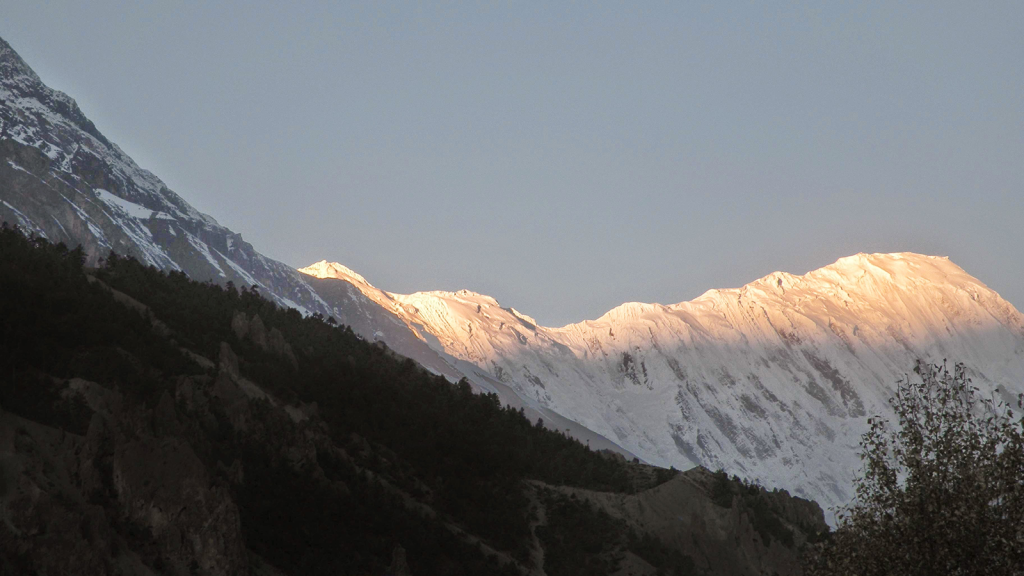
Trekking in Nepal in May May is the end of spring, and you can expect the weather to be hot in the lower elevations and warm at higher altitudes during the daytime. Despite some snowfall in the higher mountains than during May, it is much warmer, and the warmth helps to melt the snow quicker, making the trails wet, muddy, and slippery. Therefore, take precautions to hike safely. When you come across wet stones/rocks, green or black rocks/trail, muddy trail, or roots of trees in the forest – assume it is slippery and tread carefully. You should make most of the favourite trekking trails if you are an experienced hiker except for the less trodden treks such as Upper Dolpo Circuit or Upper Dolpo Traverse because deep snow will make it challenging to get through the passes that are above 5000 meters. As always – it pays to invest in proper equipment such as a suitable down jacket, sleeping bag, a couple of layers of fleece, right thermal underwear, thick hiking socks, gloves, trekking pants, and warm hats, to name a few essential gears to invest. It is always better to have more than less. It is good to dress up in layers that you can ‘peel’ one at a time when you start to warm/heat up as you begin trekking. Benefits of Trekking in Nepal Himalaya during May. May is the spring season’s end, and flowers bloom in Nepal’s middle hills. Rhododendron forests can be very colourful with white, pink, and crimson red (Nepal’s national flower) flowers in bloom, Magnolias and wild orchids, to name a few. However, the clouds can begin to form in the latter part of the day, and it can start raining at the lower altitude and snow in the higher elevations during the late afternoon or evening. This is a good thing as it can clear the clouds and clear the clouds for excellent mountain views the following day. The spring rain, hail, or snow can drop the Rhododendron petals and make the forest floors bright and colourful. All the lodges and restaurants will be open during the spring season. Lodges are unlikely to be packed. The food might be prepared faster due to fewer people staying at the lodge. Internet speed should be decent. You will be warm to hot while hiking in the sunny weather – perhaps you will sweat on the uphill climbs. You will get to meet many other trekkers in the lodges. All food on the menu will be available. The lodges will be fully stocked. Can I do a high-altitude trek in Nepal during May? You can undoubtedly do a high-altitude trek in Nepal during May. This is a better time to do a high-altitude trek than February or March. We do receive some precipitation for a few days every month. We receive more massive snowfalls during February and March rather than in the middle of May. Dangers/Inconveniences of trekking in Nepal during May The toilet floors could be wet and dirty due to the muddy trails. The paths could be icy or muddy due to the spring rain/snowfall. The trail could be slippery, and dirt can camouflage the ice. There could be very windy conditions in the higher elevations. You will likely face rain in the lower elevations and snow in the higher mountains during May. The views might not be as good in spring as it is during late autumn and May. In addition, forest fires could worsen the views during late spring. Trekking during May of 2021 (2nd wave in Nepal) and 2020 was disrupted due to the COVID-19 pandemic. May 2021: Nepal is experiencing good pre-monsoon thunderstorms for the first ten days. May 2020: Nepal experienced more precipitation than usual during the first week. There was lots of wind, thunder, lightning, hail, and rainstorms at the beginning of the month. The cyclone Amphan brought rain during the last week in Nepal and neighbouring countries. The visibility and environment were much cleaner and clearer due to the COVID-19 pandemic lockdown. Nepal received record snowfall in the higher altitude locations and rainfall during most of May 2019. The precipitation intensity lowered towards the third week, but some areas received rain and snowfall. May 2018 received more rainfall than the average caused by the Western disturbances and from the Bay of Bengal. The benefits of the showers provided much clearer days for those on the trekking trails.
Trekking in Nepal during April
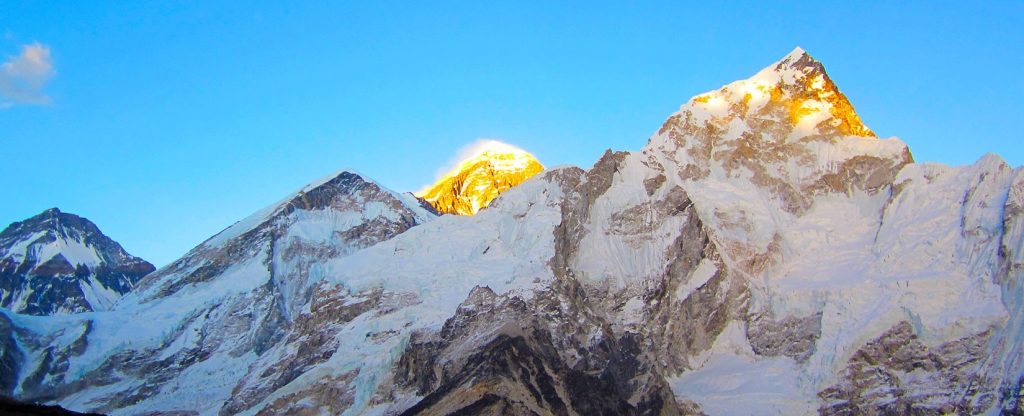
Trekking in Nepal in April April is the middle of spring, and you can expect much warmer weather. Despite some snowfall in the higher elevations and rainfall in the mid to lower altitudes than during the winter, it is warmer, and the warmth helps to melt the snow quicker. This can make the trails wet, muddy, and slippery. Take every precaution to trek safely. When you come across wet stones/rocks, green or black rocks/trail, muddy trail, or roots of trees in the forest – assume it is slippery and tread carefully. You should make most of the popular trekking trails if you are an experienced hiker except for the less trodden treks such as Upper Dolpo Circuit or Traverse because deep snow will make it challenging to get through the passes above 5000 meters. As always – it pays to invest in proper equipment such as a suitable down jacket, sleeping bag, a couple of layers of fleece, right thermal underwear, thick hiking socks, gloves, trekking pants, and warm hats, to name a few necessary gears to invest. It is always better to have more than less. It is good to dress up in layers that you can ‘peel’ one at a time when you start to warm/heat up as you begin trekking. Benefits of Trekking in Nepal Himalaya during April. This is the spring season, and flowers bloom in the middle hills of Nepal. Rhododendron forests can be very colourful with white, pink, and crimson red (Nepal’s national flower) flowers in bloom, Magnolias and wild orchids, to name a few. However, the clouds can begin to form in the latter part of the day, and it can start raining at the lower altitude and snow in the higher elevations during the late afternoon or evening. This is a good thing as it can clear the clouds and clear the clouds for excellent mountain views the following day. The spring rain, hail, or snow can drop the Rhododendron petals and make the forest floors bright and colourful. All the lodges and restaurants will be open during the spring season. You will be warm while hiking in the sunny weather – perhaps even sweat on the uphill climbs. You will get to meet many other trekkers in the lodges. All food on the menu will be available. The lodges will be fully stocked. Can I do a high-altitude trek in Nepal in April? You can undoubtedly do a high-altitude trek in Nepal during April. This is a better time to do a high-altitude trek than February or March. We do receive some precipitation for a few days every month. We receive more massive snowfalls during February and March rather than in the middle of April. Dangers/Inconveniences of trekking in Nepal during April. The lodges can be full of other trekkers and their support crew, such as guides and porters. The Internet can be very slow due to many people who have logged on. There might be a lot of people queuing for hot showers. The food could take longer due to the number of people staying at the lodge. The toilet floors could be wet and dirty due to the muddy trails. The paths could be icy or muddy due to the spring rain/snowfall. The trail could be slippery, and dirt can camouflage the ice. There could be very windy conditions from mid-March to the end of April as it is the windy season. You will likely face rain in the lower elevations and snow in the higher mountains during April. The views might not be as good in spring as it is during late autumn and April. In addition, forest fires could worsen the views during spring. The first rainfall of April 2021 arrived on the 8th and 9th of the month. It came at a crucial time when the Air Quality in Kathmandu and parts of Nepal was dangerously bad due to forest fires. The third week last and the five days of the month received a good amount of rainfall which also helped eliminate the pollution by forest fires. April 2022 experienced a lot more precipitation than usual. However, it was not windy as is the norm during April. Trekking during April 2020 and 2021 was disrupted due to the COVID-19 pandemic. April 1st, 2020, brought a lot of heavy rain, hail, and snowfall. The nation witnessed strong wind and thunderstorms from the middle to the end of the month. Precipitation was 15 per cent higher than usual in April 2020. The COVID-19 lockdown considerably cleaned the skies as there was little to no land and air traffic. April 2019 experienced, heavy rain, hail, and snowfalls throughout the month due to disturbances from the Arabian Sea and the Bay of Bengal. As a result, domestic flights were delayed, while some afternoon flights were cancelled due to bad visibility. April 2018 experienced more rainfall than the average caused by the Western disturbances and the Bay of Bengal. Check out our Trekking packages for Nepal, Bhutan, India, and Tibet.
Trekking in Nepal during March
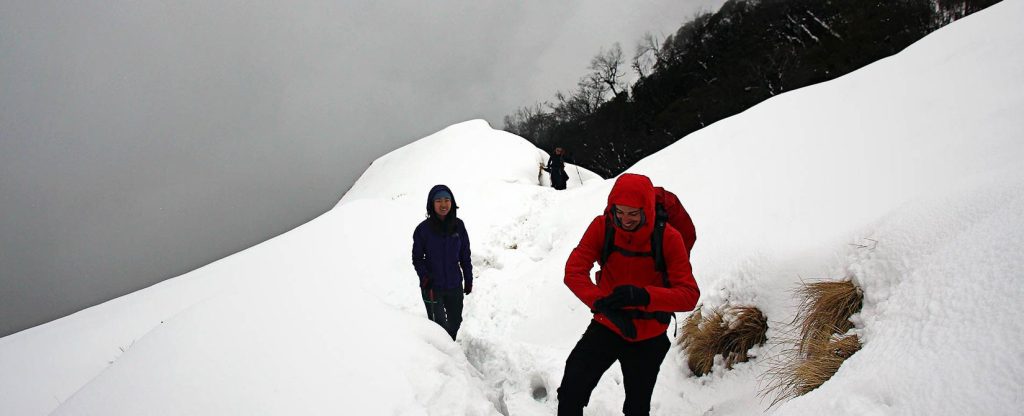
Trekking in Nepal in March March is the beginning of spring and warmer weather. Westerly disturbances from the Arabian Sea or The Hindu Kush bring snowfall to Nepal’s higher elevations in March. Despite more snowfall in the higher mountains than during the winter, it is warmer, and the warmth helps melt the snow. However, the precipitation can make the trails wet, muddy, and slippery. Take precautions to trek safely. When you come across wet stones/rocks, green or black rocks/trail, muddy trail, or roots of trees in the forest – assume it is slippery and tread carefully. You should make most of the favourite trekking trails if you are an experienced hiker, except for the less trodden treks such as Manaslu Circuit, Upper Dolpo Circuit, or Dolpo Traverse, because deep snow will make it challenging to get through the passes that are above 5000 meters. As always – it pays to invest in the right equipment such as a suitable down jacket, sleeping bag, a couple of layers of fleece, the right thermal underwear, thick hiking socks, gloves, trekking pants, and warm hats, to name a few essential gears. It is always better to have more than less. It is good to dress up in layers that you can ‘peel’ one at a time when you start to warm/heat up as you begin trekking. Benefits of Trekking in Nepal Himalaya during March. It is the spring season, and flowers bloom in the middle hills of Nepal. Rhododendron forests can be very colourful with white, pink, and crimson red (Nepal’s national flower) flowers in bloom, Magnolias and wild orchids, to name a few. However, the clouds can begin to form in the latter part of the day, and it can start raining at the lower altitude and snow in the higher elevations during the late afternoon or evening. The rain and snow are good as they can clear the clouds and clear the clouds for excellent mountain views the following day. 1) The spring rain, hail, or snow can drop the Rhododendron petals and make the forest floors bright and colourful. 2) All the lodges and restaurants will be open during the spring season. 3) You will be warm while hiking in the sunny weather – perhaps even sweat on the uphill climbs. 4) You will get to meet many other trekkers in the lodges. 5) All food on the menu will be available. 6) The lodges will be fully stocked. Can I do a high-altitude trek in Nepal during March? You can undoubtedly do a high-altitude trek in Nepal during March. This is because we receive some monthly precipitation for a few days. However, we receive more massive snowfalls during February and March rather than in the middle of winter. Dangers/Inconveniences of trekking in Nepal during winter. 1) The lodges can be crowded with other trekkers and their support crew, such as guides and porters. 2) The Internet can be prolonged due to many people who have logged on. 3) There could be a lot of people queuing for hot showers. 4) The food might take longer to be prepared due to the number of people staying at the lodge. 5) The toilet floors could be wet and dirty due to the muddy trails. 6) The paths could be icy or muddy due to the spring rain/snowfall. However, the trail could be, and dirt can camouflage the ice. 7) There could be very windy conditions as mid-March is the beginning of the windy season. 8) You will likely face rain in the lower elevations and snow in the higher mountains during March. 9) The views might not be as good in spring as during late autumn and winter. Forest fires could worsen the views during spring. 10) Sudden windy conditions bring rain or hail storms during March, which is the windy season. In addition, you have to be careful of flying debris, such as signboards, tin roofs, falling branches, and even trees that get uprooted. Trekking during the second half of March 2020 was disrupted due to the COVID-19 pandemic. March 2022 experienced the average amount of rain and snowfall depending on the altitude of the locations in Nepal. Mid-March is the beginning of the windy season here, but it wasn’t windy this year. March 2021, experienced a dry mouth. However, there was some rainfall in the first week, and the last day of March saw the most rain of the year. March 2020 experienced average rainfall with the usual gusts of wind, thunder, and lightning in different parts of the country. The visibility and environment were much cleaner and clearer due to the COVID-19 pandemic lockdown. March 2019 experienced good rain and snowfall. We witnessed more precipitation than in the past two decades, especially during March’s beginning and the end. Check out our Trekking packages for Nepal, Bhutan, India, and Tibet.


